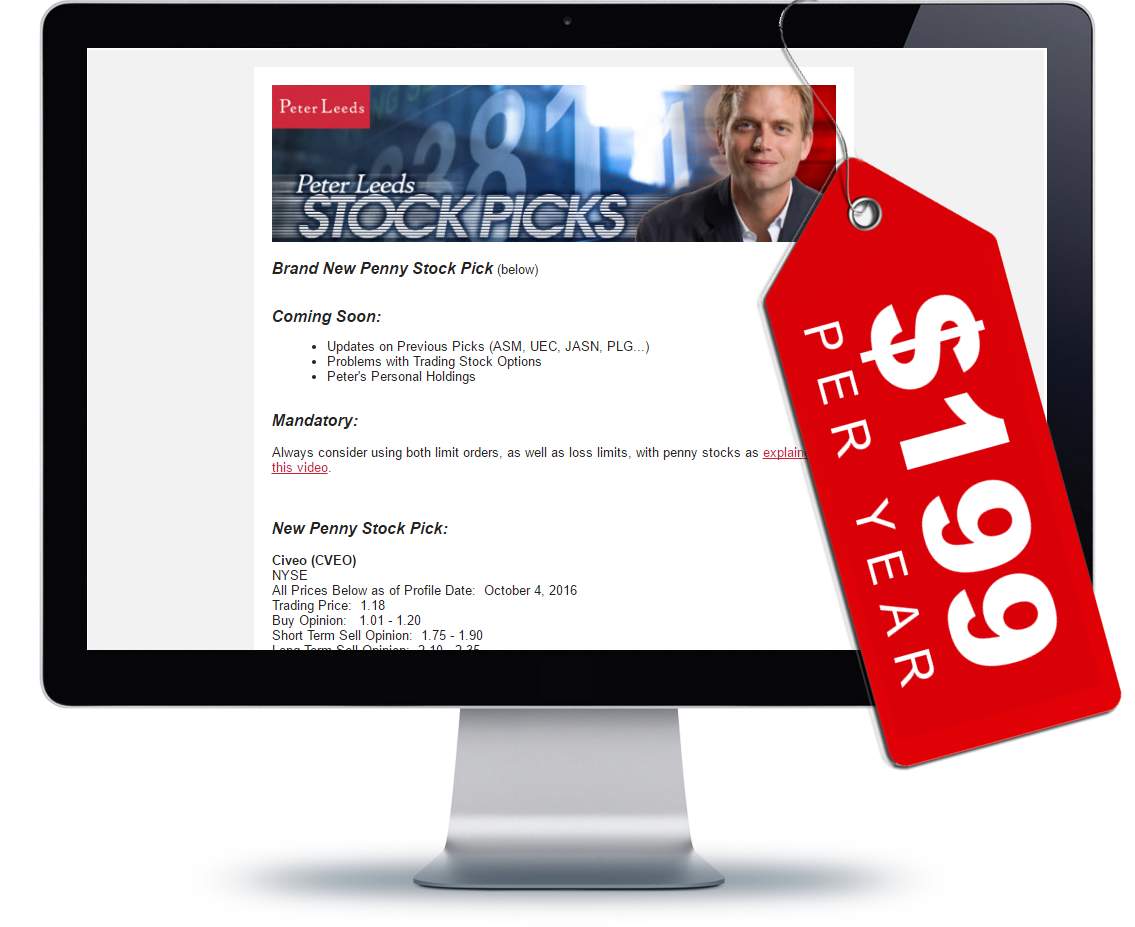Blog : 8 Penny Stock Tips
by Peter Leeds on February 18th, 2015
Here is a collection of some of the Tips which we have provided to subscribers of both Peter Leeds Express and Peter Leeds Stock Picks.
This list is continually growing, as Peter and his team work hard to get actionable penny stock information out to you.



Tip: Effects of US Dollar Strength
Many
commodities (oil), precious metals, and base metals are priced in US
dollars. Thus, when the US dollar increases in value, it takes fewer
dollars to buy those items. When the US dollar drops in value, things
traded in US currency will seem to rise in price.
Tip: Cash Bleed
How much money the company uses in their operations, after taking revenues into account. Expect most start-ups and penny stocks to have a cash bleed rate (meaning they are losing money).
Tip: Financial Ratios
A ratio is simply one number divided by another, in order to provide additional information. For example, the share price divided by the company's earnings is their price/earnings ratio (P/E). Financial Ratios allow comparison of companies of all sizes - you could compare IBM to some obscure penny stock, and know which one is stronger based on P/E, or any other ratios you choose. There are dozens of financial ratios which display a penny stock's liquidity, activity, leverage, performance, or valuation.
Tip: Book Value
The total value of a company's assets, minus intangibles like patents and goodwill, and also liabilities. Ignore book value for small, new, or penny stock companies.
Tip: Takeovers (Especially Common in Penny Stocks)
When bigger companies acquire or buy a smaller company for strategic reasons. Typically, the purchaser pays a price premium to the seller to encourage current shareholders to sell. This results in the buyer's shares dipping slightly, while the shares of the company being acquired will rise (at least 10%, usually more). Penny stocks get taken over all the time, since they are small or new.
Tip: Client Base Diversity
The more clients a business has, the more insulated they are from customer-related shocks. If a business has 3 customers and they lose 1, that is a problem. If a company has 3,000 customers, but the biggest one accounts for 99% of their business, that's a problem. Ideally, any business will have many customers, with their "importance" dispersed between them. That way, the sudden loss of client will not derail the business.
Tip: Limit vs. Market Orders
Market orders mean you buy or sell at the best available price. In thinly-traded penny stocks, a small trade order can often push prices, and individuals might wind up paying more than they intended. A limit order means you trade at X.XX or better. For example, buy 3,000 shares at 42 cents means you pay 42 cents or less for any shares. If there are not enough shares being sold at 42 cents or less, then you only get as many as were available at your limit price.
Tip: Stop Loss
Setting a certain "trigger" price at which you will sell your shares, no matter what. Often, investors will buy a stock, and set their stop loss limit 2% or 5% lower. With volatile penny stocks, stop losses typically need to be set wider (5% to 15%). In the first example, you sell if the shares drop by 2% or 5%. By following stop loss practices, you limit downside. Stop Losses are the #1 most important concept to investing well in penny stocks.
As of January 2017 we no longer publish the blog and it has been removed from the webiste menu.
You are reading this old blog entry because we still like to reference it. :-)
You are reading this old blog entry because we still like to reference it. :-)
Get Our Best Low-Priced Investments
- don't have the time?
- can't do all the work required?
- want selections from the authority?
For only $199 per year, we give you our best high-quality, low-priced stock picks. Along with a full team, Peter Leeds is the widely recognized authority on small stocks. Start making money from penny stocks right away.


